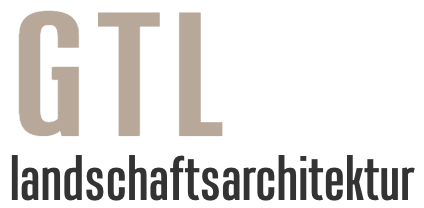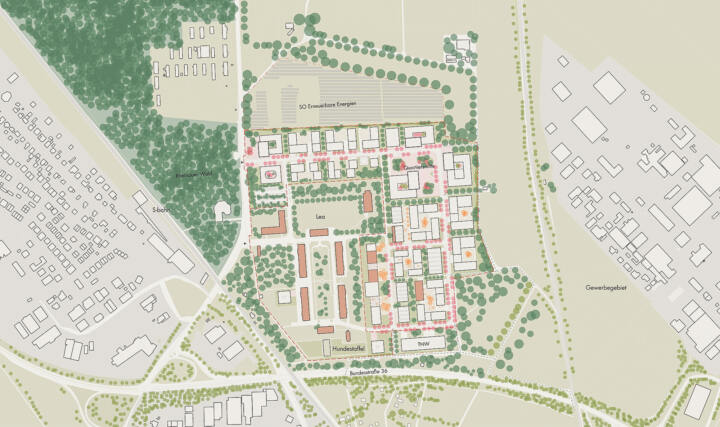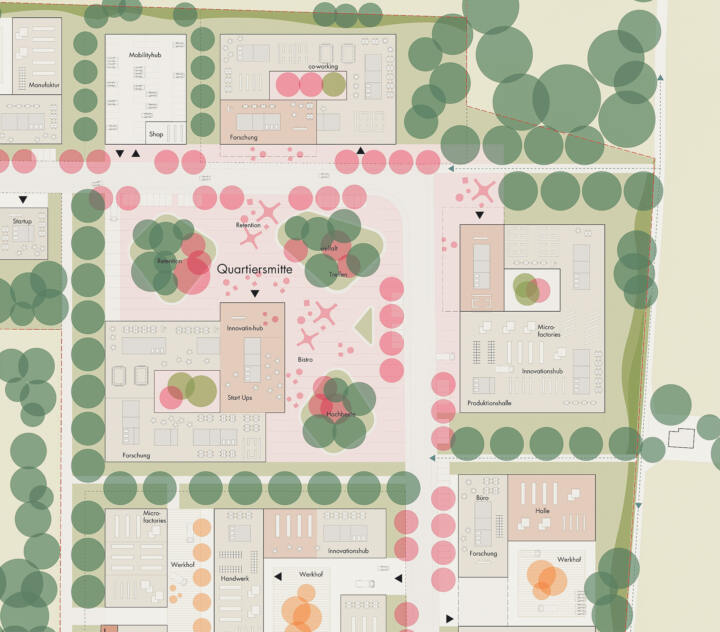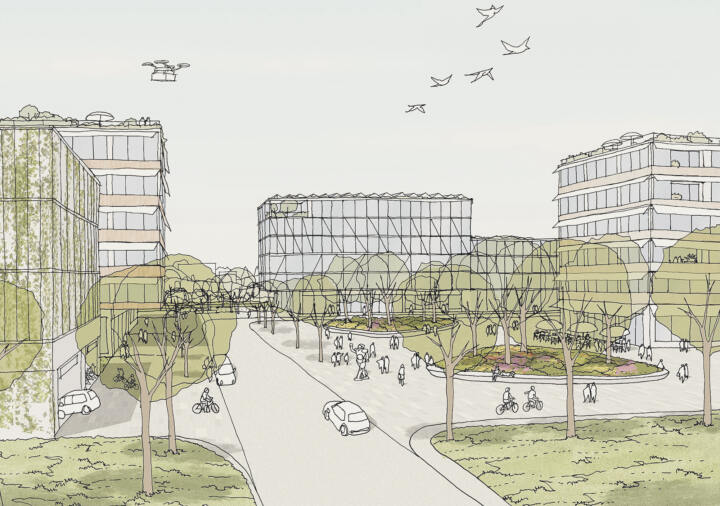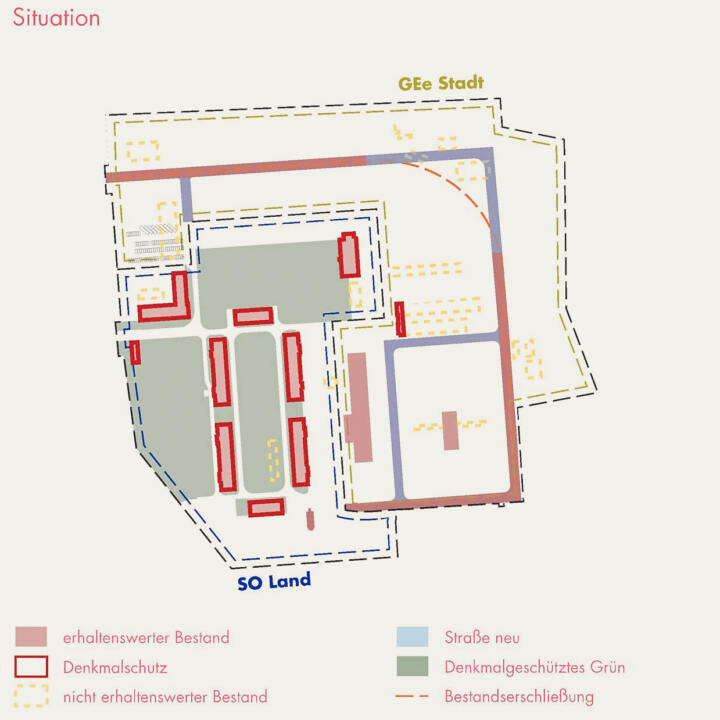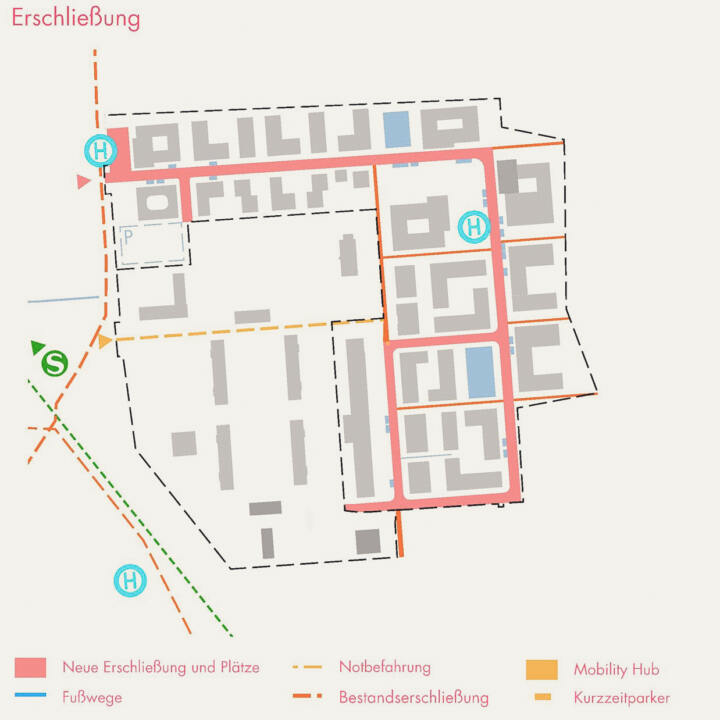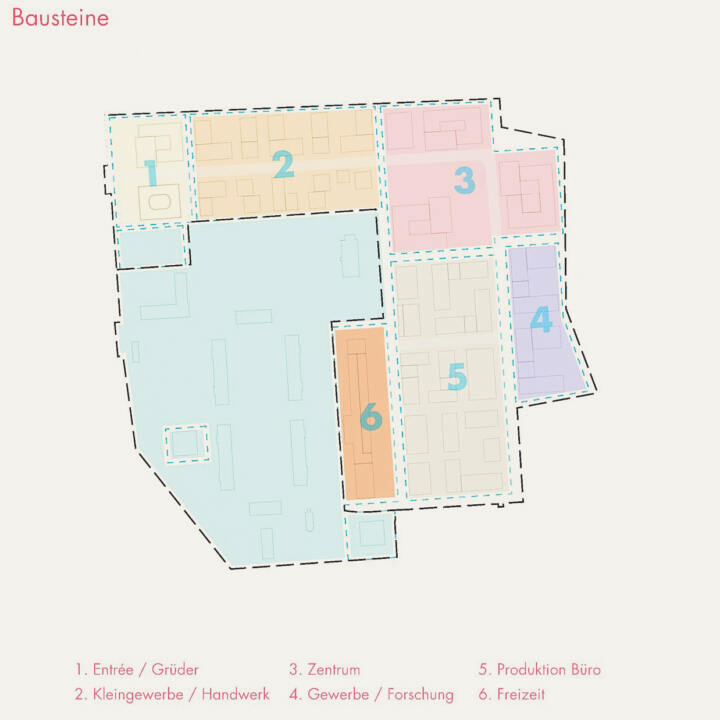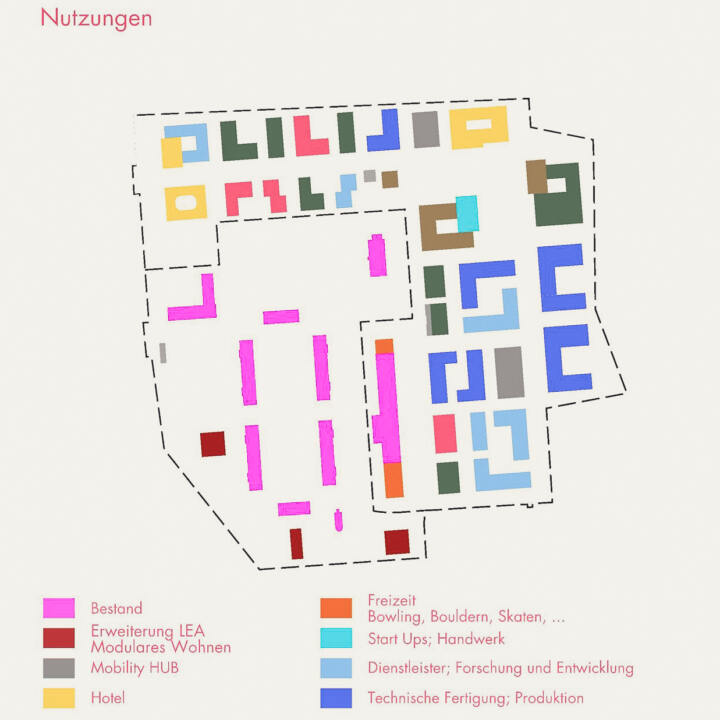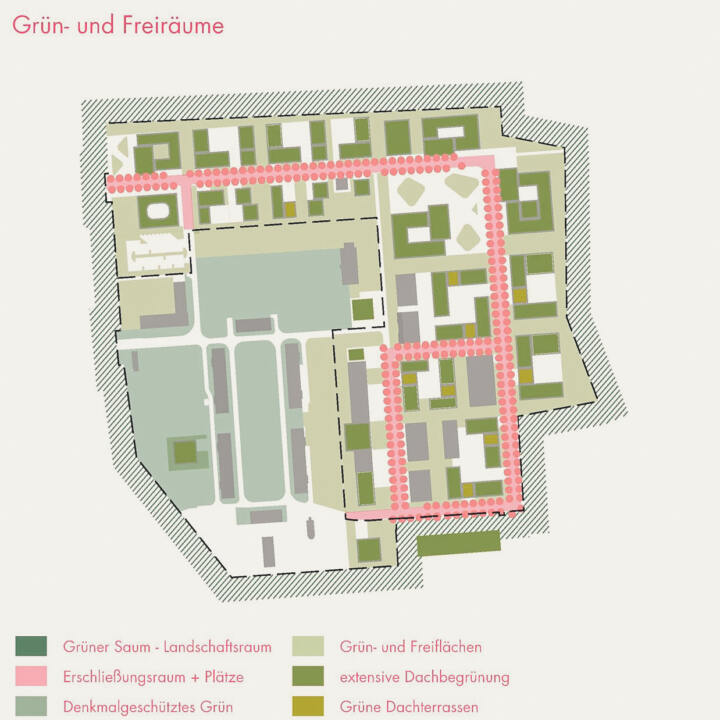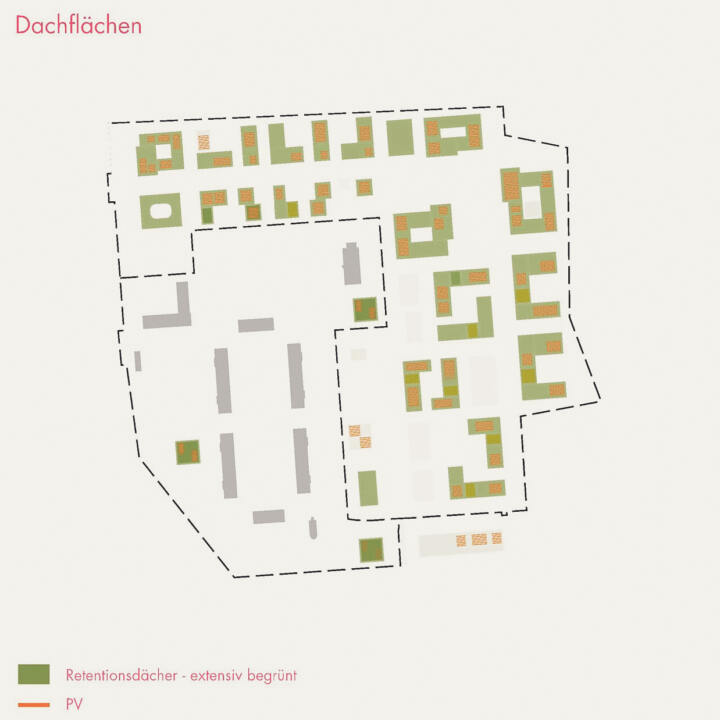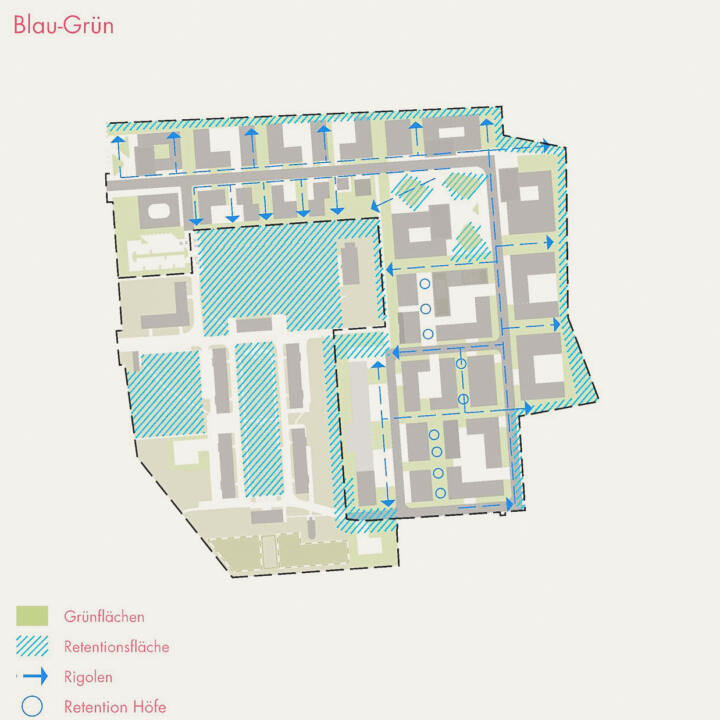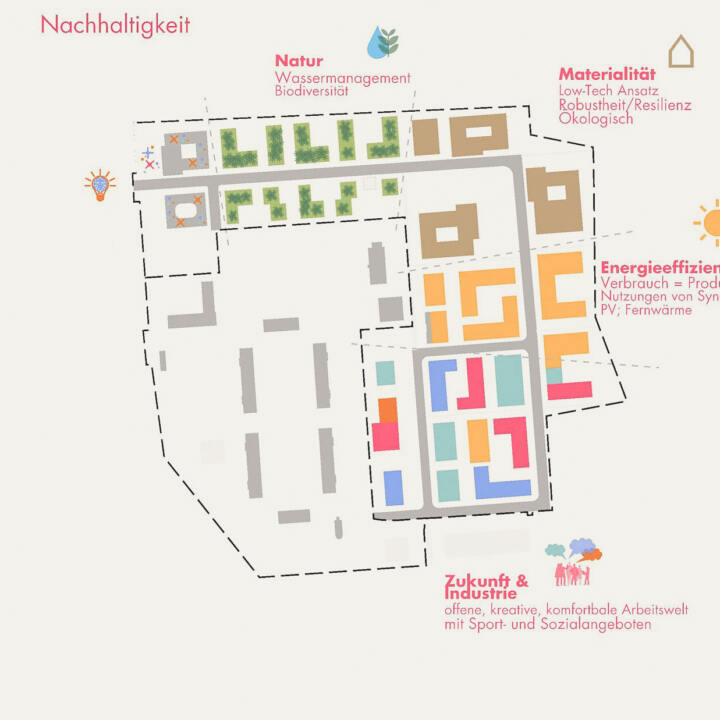Multiple commission 1st prize | Innovative industrial estate
Schwetzingen
In collaboration with Schneider+Schumacher
Natural integration and gradual development
The special island location of the area, embedded in neighbouring landscapes with forests and valuable biotopes, requires a careful and flexible development strategy. This must react responsibly to the different ecological and social requirements. The aim is to protect the natural environment and at the same time offer the opportunity to adapt to the dynamic requirements of the surroundings.
A key objective of the planning is to clearly define the edges of the area in order to create a clear settlement boundary to the neighbouring landscape. This is essential in order to preserve and protect important green spaces and ecological connections in the long term.
The commercial area
The commercial area is understood as a programmatic unit that integrates a variety of plot sizes and utilisation profiles. This enables the establishment of high-quality industry, service companies, research facilities and science. The flexible utilisation is intended to create an attractive location that meets different economic requirements.
In the area known as the LEA, the listed buildings will be retained. This will be supplemented by two separate residential buildings that will be carefully integrated into the existing ensemble. This approach preserves the historical character and at the same time allows for a gentle further development of the area.
Thematic areas and different utilisation structures will be created within the commercial area. This allows for flexible marketing that is geared towards the specific needs of potential tenants and users. Both small-scale and large-scale developments can be realised.
Plot sizes and development dynamics
The development of the business park allows for flexible development with variable plot sizes, ranging from small (S) to medium (M) to large (L) and very large (XL). This offers space for different types of business, from low to high buildings, and enables dynamic adaptation to demand.
Development and networking
The new main development of the area will be largely retained. By maintaining the existing infrastructure, better property layouts are made possible. A central, green main square serves as a multifunctional meeting point and centrepiece of the area. This square forms the entrance and gives the area an inviting atmosphere.
Two mobility hubs not only serve as collection points for parking and sharing services, but also as places for communal and catering facilities. On the ground floor of these hubs, for example, bakeries, kiosks and small shops are planned to serve the area’s residents and workers.
The industrial estate’s road network will be closely linked to the surrounding roads. These include access to the S-Bahn station, cycle paths and a bridge over the neighbouring main road. This will ensure optimum accessibility for various road users.
Blue-green infrastructure and sustainability
All squares and streets in the industrial estate follow the principle of the sponge city. Care is taken to maintain the highest possible proportion of unsealed surfaces. Where possible, sealed surfaces will be equipped with infiltration-capable surfaces. Rainwater is channelled into open gutters and troughs where it can seep away and evaporate. Excess water is channelled into large retention areas to ensure efficient infiltration in the area.
All roofs in the area will be designed as green and retention roofs and equipped with photovoltaic systems. This will help to retain rainwater for as long as possible and generate sustainable energy at the same time.
The entire neighbourhood is characterised by changeable, flexible and yet durable structures. High-quality building materials are used that are recyclable and CO2-neutral. The aim is to achieve DGNB certification, which emphasises the sustainability and environmental friendliness of the project.
Gradual development and initial projects
The industrial estate will be developed successively from north-west to south-east. However, actual demand will also play a decisive role in the development process. The start-up centre at the Entrée, the innovation centre at Quartiersplatz and the existing leisure centre will serve as the initial spark, giving the starting signal for further development.

